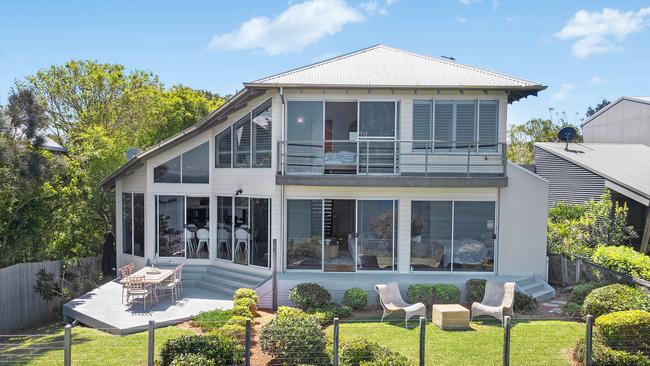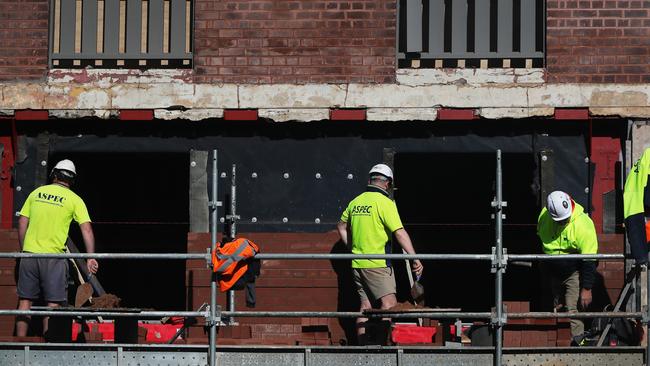In a strange way the decision of the Prime Minister to buy a luxury dwelling on the north coast of NSW has suddenly focused the community on the crisis. But neither our state nor federal politicians have the powers or ability to separately repair the damage.
And so they talk mindlessly about targets to build dwellings — targets which can’t be achieved in most areas of Australia unless the basic problems are understood and hopefully addressed.
From time to time, simple solutions are paraded to the community like “skills training” and importing more skilled workers. These and other “remedies” are part of the solution but they won’t help unless the structural issues are addressed.
And so this week Industrial Relations Minister Murray Watt is calling a conference to address the CFMEU rackets. Those rackets boost apartment costs, so it is a good thing to do, but it does not address the complex underlining problems.
Another solution is to slash migration. That will alleviate the symptoms of the building crisis but, again, does not address the structural problems behind the crisis.
Today I will do my best to map out crisis contributors in addition to the above, but there will be many others.
I will start with the destructive force I have documented many times, which will have contributed to Anthony Albanese buying an existing dwelling — the “NSW disease” which is now spreading to Victoria and the rest of the country.

NSW has an army of bodies and planning operations which devote their life to substantially delaying most projects and substantially increasing their costs. Politicians are powerless.
As the “NSW disease” infects the nation already, existing cost increasing systems become worse. And in some areas Aboriginal communities are now increasing their ferocity in blocking projects.
It is as though the referendum defeat, the regular acknowledgment of some form of title and a different legal system in some welcome to country words appears to have made it much harder for non-Aboriginals to gain approval from Aboriginals to build on freehold land. And this force often links to an increasing range of environmental problems.
If politicians want to overcome the housing crisis they must tackle the “NSW disease” boosting the costs of dwellings in every state. But behind that disease is a deep community dislike of developments near their residence.
Reflecting this community dislike, most councils will not consider going through their developmental approval process unless all the various bodies have approved the project.
The delays and legal costs create monumental bills that must be recovered in the price of the land and buildings.
But that’s just the start. When builders walk into a bank and ask for working capital, unless they have lots of asset security, they are the laughed out the door.
Most banks are no longer interested in funding builders, even though builders are essential components in their mortgage lending supply chain. What makes lending to builders so risky is that bank lending departments demand fixed-price contracts when building costs are rising more than expected, which regularly send builders broke.

If a developer proposes an apartment development and gets through all the hoops outlined above, the banks usually want close to 100 per cent of the proposed apartments to be sold in advance “off the plan”.
In the old days it was 50 per cent. This is not an easy process.
As well, on top of the approval-driven cost increases, the states lob an array of taxes on property that sends costs skyrocketing.
In some states such as Victoria, the market price for apartments is simply too low to enable a builder to complete the project and break even.
So even if all the apartments were to be sold in advance at current market values the proceeds would not be sufficient for the builder to complete the development without being in the red after allowing for regular cost increases. The development cannot proceed.
And then we get to homebuyers. The current situation is banks, under current regulated lending rules and interest rates, simply can’t justify lending to most first-home buyers who do not have parent or grandparent support.
There are a multitude of government support schemes, but they are having limited impact because the problems start earlier in the supply chain.
The NSW Productivity Commission canvassed the idea of governments signing contracts to build the apartments at a price that gives the builder a profit. In theory, state governments can bulldoze their way through the approval process, not tax themselves.
Any state government that obeyed the current rules and paid the costs would have to cross their fingers and hope the apartments rose in value.

Alternatively, the state governments will simply rent the properties out and we will turn Australia into a rental community rather than a homeowning community.
This is not an easy problem to solve, but it has to start with state governments setting up fast decision-making approval bodies and appointing people who are trained to efficiently approve or reject proposals. Then we will need to look harder at building and construction methods to see if there is a possibility of substantially reducing construction costs.
Unless state and federal governments are prepared to tackle all the problems, including bank practices, isolated solutions won’t work.






I have been watching the Australian dwelling construction industry for more than half a century and I have never seen it in such a mess.